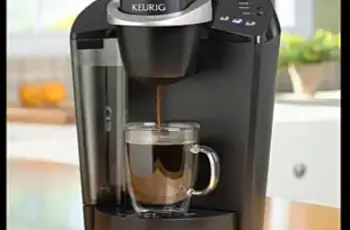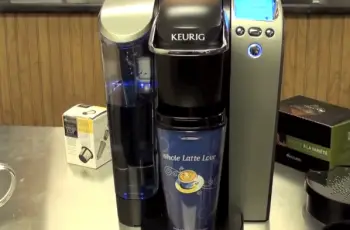Your drip coffee machine is your go-to for that essential boost of coffee right in your kitchen. But, have you ever stopped to consider how much power it uses? Understanding the wattage of your 4 cup coffee maker is crucial, whether your goal is to protect the environment, reduce your electricity costs, or keep your sensitive electrical system running smoothly.
We’ll discuss what wattage is, how many watts coffee makers use, and how it affects you in this article. We’re going to save you a lot of money on your daily coffee routine!
Wattage – What Is It That A 4 Cup Coffee Maker Use
It is a measure of electrical power, meaning what amount of energy your electrical devices need to work. Since every electrical device uses energy, wattage is a way to determine how much energy it consumes. To determine the wattage, multiply the volts by the amps. Amps measure energy use, whereas volts measure the force of the energy. You don’t have to calculate this unless you want to. These details are advertised by manufacturers.
Wattage matters, because it impacts your electric bill. Whenever you turn on a bulb or plug in your coffee maker, you use energy, which is billed every month by the electric company. You can start saving money and energy by reducing your energy bill with kitchen appliances like your 4 cup coffee maker.
Wattage Consumption Of 4 Cup Coffee Makers
Hundreds of models exist on the market, each with its own features and design, so the wattage of a coffee maker can vary considerably. Typically, a basic small coffee maker operates with 500 to 1200 watts of energy.
The power required to run a 4 cup coffee maker ranges from 550 to 900 watts, while a larger model consumes 750 to 1200 watts. Single-serve coffee makers that use coffee capsules typically consume between 900 and 1500 watts. A coffee maker that makes espresso automatically consumes between 1000 and 1500 watts.
If your coffee maker can keep the water hot so that you can brew it as quickly as you would like, it is going to use at least 60 watts per hour to keep that temperature constant. Although you might not need the coffee maker all the time, you’ll be paying for it unless you turn it entirely off.
Some Specific Brands’ Wattage Consumption
We are providing you with the wattage ranges for popular coffee maker brands. To find out the wattage of a particular model, you should refer to your coffee maker’s user manual. Don’t worry if you misplaced yours. You can easily find a copy on the brand’s website.
The energy used by Keurig coffee makers to keep the water hot ranges between 200 and 400 watts. During full brewing mode, they peak at about 1500 watts. By comparison, the 12-cup Mr. Coffee uses 900 watts, which is much more efficient.
The power consumption of a Nespresso machine is over 1000 watts. This is quite similar to the VertuoNext coffee makers which consume 1260 watts whereas the CitiZ coffee makers consume 1710 watts.
How To Prepare Coffee Without Electricity
It is certainly possible to make coffee without electricity, but not with a drip coffee maker. To make coffee using pour-over and French press without electricity, heat water on a gas stove or over a campfire. If you are willing to wait 18 hours for your coffee, you can skip the heat entirely by making a chilled cold brew.
Energy-Saving Tips For 4 Cup Coffee Makers
Many people do not consider how much energy small appliances like coffee makers consume. In general, even if you are only spending pennies on your appliances, it is smart to conserve energy. It’s easy to see how a few dollars a year times many minor appliances can add up to a substantial sum. What is the point of wasting that on electricity? You can reduce your coffee-related energy consumption by using the following options:
- Use a manual brewing method, such as a French press or pour-over.
- Avoid purchasing coffee makers that go to standby when not in use. Just unplug it when you’re not brewing anything.
- You should be sure that your coffee maker has the Energy Star label, so you will know you are buying an energy-efficient model.
- To prolong the life of your coffee maker, descale the mineral build-up once a month.
- Instead of buying drinks at a cafe, make them at home to save money and fuel.
Conclusion
Understanding your energy consumption will enable you to conserve more of it. Maintaining it regularly and turning it off when not in use can also help. An eco-friendly coffee maker can save you money. Coffee makers consume varying amounts of energy. So whatever you have, know how to limit your energy consumption.


